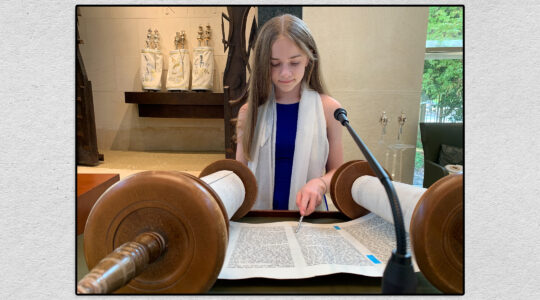The New York Times devoted a good part of its front page last Friday to photographs of children, mostly Palestinian, killed in the latest Israel-Hamas fighting.
“They Were Only Children,” reads the headline, over an article (and, online, a multimedia presentation) providing capsule biographies of 67 children under the age 18 who were killed in Gaza and two children killed in Israel. (“Suheib loved birds. Yahya liked riding his bike. Osama was known for his style. And Abdurrahman dreamed of going to Turkey.”)
It’s a powerful, heartbreaking feature, a callback to The Times’ groundbreaking series of profiles of Sept. 11 victims, “Portraits of Grief.” That series earned the newspaper a Pulitzer and created a new journalistic ritual for memorializing the victims of conflict, shootings and natural disasters.
But the Gaza feature didn’t feel like journalism. It felt like agitprop. It was an editorial disguised as a news feature, seemingly intended to bypass the arguments of who is right and wrong and go straight for the kishkes.
Granted, it’s the work of journalists to break through the numbness that sets in in the face of suffering. It’s a Jewish imperative, too, to insist that every human being is created in the image of God, and each individual has infinite value.
Sometimes it is a single image or story that shatters this indifference. Photos of the lifeless body of a young Syrian boy drowned while attempting to reach the Greek island of Kos briefly changed the conversation around Europe’s refugee crisis in 2015. “Portraits of Grief” features are statements that, yes, all lives matter, and it is one of journalism’s jobs to remind you of that.
The article included with the photos did note that “Israel blames Hamas for the high civilian death toll in Gaza because the group fires rockets and conducts military operations from civilian areas.” There is also a mention that two children in Gaza were killed when a rocket fired by “militants in Gaza slammed into the ground next to their home.”
But I wonder how many readers will register these facts while scanning the children’s faces. The feature is a sort of front page “Guernica” that suggests there is only one way to think about this latest war. “Disproportionality” is an argument that Israel cannot win.
My discomfort with the feature is that it is simultaneously powerful and, forgive me, banal, like the old Vietnam-era poster, “War is Not Healthy for Children and Other Living Things.” It takes sides, even if the paper’s editors deny it. And I’ll even say this: There are times when journalists should take sides. From Bosnia to Myanmar to Tulsa, the evidence of guilt is sometimes so overwhelming that the perpetrators must be shown for what they are.
I just think it is a travesty to slot the Israel-Hamas conflict into that same black-and-white category. If Hamas is killing far fewer children than Israel, it is not for want of trying. If Gaza’s children “are the most vulnerable,” it is because their own leaders are not doing anything to make them any safer. If Israel’s blockade is causing suffering, Hamas’ behavior demonstrates why Israel would be crazy to lift it.
A lot of Jewish readers will just chalk this up as another example of The Times’ bias against Israel. I’m not interested in that argument at the moment, although I will say that many pro-Palestinian activists think exactly the opposite: that The Times’ reports on the Mideast from Israel’s perspective and treats Palestinians as objects, not subjects. And The Times’ popular “The Daily” podcast had an important segment last week on Hamas, reporting how Hamas provokes Israel into “battles it knows it can’t win” in part because they know that Arabs – their children — will suffer the brunt of the fighting and media coverage will be devastating for Israel.
Israel lost the social media battle in part because of heart-tugging images of Palestinian suffering – shared not by The New York Times, but by individual Instagrammers, influencers and no doubt the occasional bot. Israel’s ritualistic condemnations of Hamas and assertions that it goes to extraordinary lengths to avoid civilian casualties were no match for a single video of a crying Palestinian child. That’s the new media reality.
But to blame this on “the media” misses the point. Beyond the violence, there is this: As long as Israel is seen controlling the lives of millions of non-citizens, it is in a losing battle for public opinion. Readers can cancel their subscriptions and write angry letters to the editor, but that won’t change a status quo in which Israel is seen to be compromising its own democratic principles. It’s been almost 20 years since Ariel Sharon, no peacenik he, said that occupation — “kibush” in Hebrew — is “a terrible thing for Israel and for the Palestinians.”
That was essentially Tzipi Livni’s recent argument. The former Israeli negotiator acknowledges that Hamas fights dirty. That Israel has the right to defend itself. That Hamas refuses to accept Israel’s very existence. But without a two-state solution, extremists will drive the narrative — a narrative that will continue to portray Israel as the oppressor.
The feature is a sort of front page ‘Guernica’ that suggests there is only one way to think about this latest war.
Sick of hearing about the “two-state solution”? Everyone is. “[F]rankly if I had another idea how to end the conflict, I would have adopted it,” writes Livni. However, she continues, “National conflicts cannot be resolved by wars and violence, but only by a political resolution, leadership and compromise.”
So instead of condemning The Times for bias, supporters of Israel might want to consider what its coverage of the latest fighting means: Israel is engaged in war of emotions and public opinion that it might not be able to win — not unless it changes the story.
Andrew Silow-Carroll (@SilowCarroll) is the editor in chief of The Jewish Week. Subscribe to his Sunday newsletter here.
The New York Jewish Week brings you the stories behind the headlines, keeping you connected to Jewish life in New York. Help sustain the reporting you trust by donating today.





